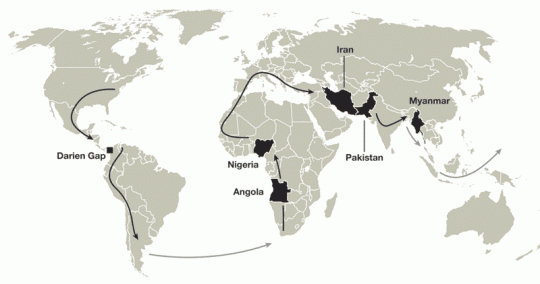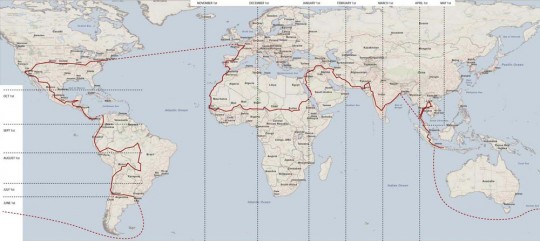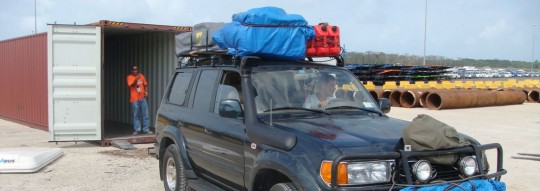
Along with a group of other people shipping trucks, we were able to find a container boat leaving Colon, Panama on Wednesday. We went with Wilhelmsen (http://www.wilhelmsen.com), a worldwide company. If you are interested in shipping your car, there is a note at the end of this entry giving contact information.
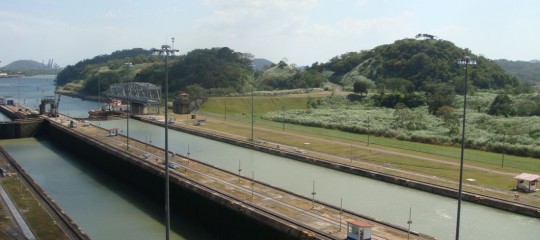
On Sunday we visited the Miraflores locks on the Panama Canal.
Early on Monday morning, we met with the other parties, all French travelers, and we booked two containers and a flat-track to transport the four vehicles. Sharing a 40-feet container with another vehicle, I had to pay US$950, not including fees on the Colombian side.
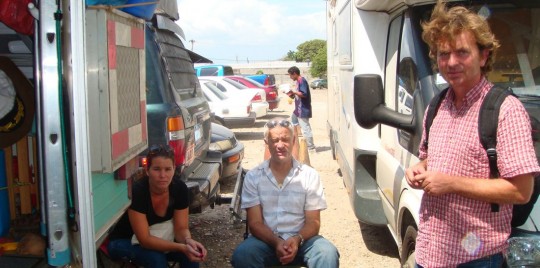
All day Monday was busy running from one police station to the other, filling tons of meaningless papers, always looking for the next stamp. First we needed the inspection of the vehicle, when the police check the truck serial number. Then we had to go to another place where they check that you didn’t get a ticket while in Panama. They then give you an exit authorization. We had to go back to the shipping agent to pay and get the Bill of Lading.
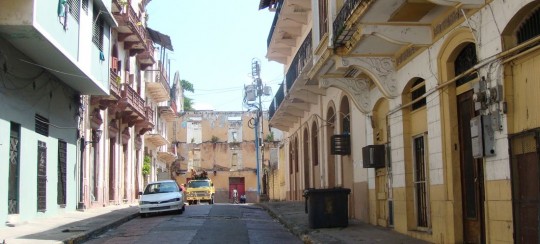
The day after, we left the city at sunrise with only one driver per vehicle, since only one person can enter the port with each shipment. It took us one hour to reach Colon, on the Caribbean coast. We stopped shortly before the city to wash the car, as the port authority can have you pay US$100 to clean the vehicle if they judge it too dirty to enter their rusty containers.
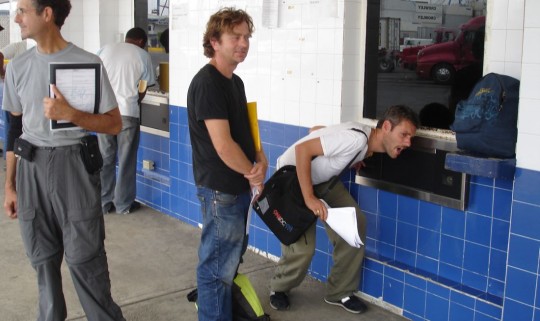
All the first part of the day went running from the custom offices to the shipping agent, to inspections, to get port entry passes (US$5), and to have drug searches done on the trucks.
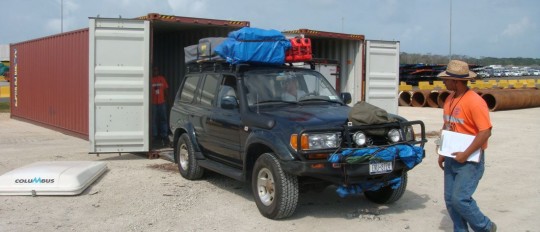
At last, around 2 p.m., the port employees guided us to our containers. My vehicle, the smallest of all was able to enter without problem in the 2.6-meter-high box. We un-mounted a roof-tent from the other vehicle we stuffed in the same container, and also had to let the air out of the tires so it would fit.
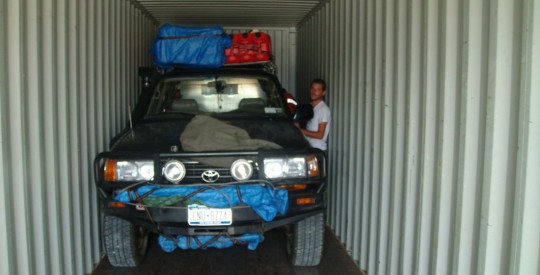
In another container, we stuffed without problem a big Dodge truck, but had to force a bit to get the U-Haul trailer in.
Another camping car found its place on the flat track.
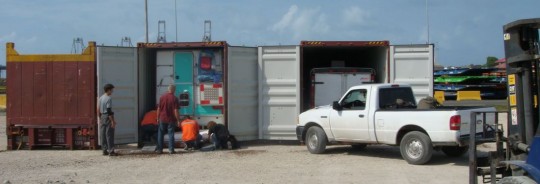
At 3:30 we were out of the harbor and dirty like dogs. We shared a car to the airport where employees would soon understand how bums from the road look like.
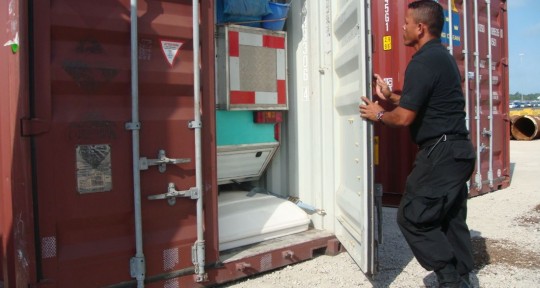
It was very disappointing to fly above the Darien Gap at night and I will always regret I didn’t see this mysterious place. I bet that in a decade there will be a road there, changing the fragile equilibrium between the jungle and its inhabitants.
Nadia flew earlier in the day in another plane to get hotel rooms in Cartagena with other people of the gang ($30 and less for a room). Around 11 p.m. we met her in the city after a 1-hour flight (US$240, could cost $180 in advance, but you need to have your Bill of Lading in hand before you buy your ticket).

Two hours and few beers later, we were in bed, exhausted.
Appologies to all for the delay posting this entry, but it seems that in Colombia, access to my blog is blocked by a government program of internet censorship. It may be a problem until I leave the country.
NOTES:
Shipping between Colombia and Panama can cost $750 to $1400 for a SUV. You can use Ro-Ro (roll-in roll-out boats, a bit like ferries) or containers. There is no ferry service. The most common route is Cartagena-Colon. It takes 2 days to do the paperwork before departure, two days at arrival, and 1-2 days transit time.Another solution I found out too late is that there is a possibility to use banana boats to go from Colombia to Costa Rica (skipping panama). It is also possible to ship from Ecuador to Costa Rica. There are at least a weekly departure for cars between Panama and Colombia with the two most used shipping companies, which are Wilhelmsen and Seaboard. Both companies are similar in prices. All depend of if you ship alone, share containers, and how many containers you will book. You can ask quotes to Vanessa de Gracia (vdegracia [AT] seaboardmarinepanama.com) from Seaboard and Evelyn Batista from Wilhelmsen (Company used to be call Barwil) (evelyn.batista [AT] wilhelmsen.com).
For the banana boat, ask a quote and a list of destinations to Alicia from the famous Chiquita company (alromero [AT] chiquita.com). Use the Banana boat only if it is way cheaper.

